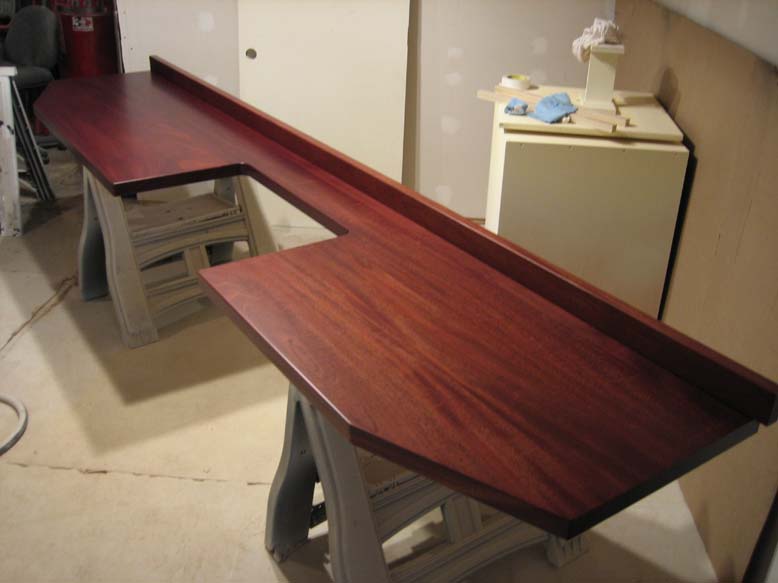Making Door Muntins and Mullions
The complex joinery for window frames in cabinet doors can really slow the job down. Here's how some cabinetmakers approach the task. May 7, 2007
Question
Question to all door makers: What method do you use to make and install muntins and mullions in cabinet doors? We typically run our stock through the shaper to get the profile and then through the widebelt to get it to the right thickness so that it doesn't take much sanding to level the grid to the door frame. That process is pretty straightforward. It becomes very tedious and labor intensive though when it comes time to cut to length and cope ends. (We sandwich our molding between two blocks of wood and cope on the shaper). We are typically doing 6 lite grids and cottage style (9 lite). Any ideas to speed production would be most appreciated.
Forum Responses
(Cabinetmaking Forum)
From contributor B:
I typically run my copes first. The coping stock being 2-3 times the width of the actual mullion, so that you are actually coping 2 or 3 mullions ends at once. Then shape the sticking on 2 sides of this stock, then rip the stock to size and finish shaping the sticking using the appropriate jig for holding narrow stock. Maybe that helps?
From contributor M:
We just use a long coping sled on the shaper and stack as many as we can on the sled, with a special shop-made hold-down to secure them all down safely. We can do 10-15 per pass on the shaper. It takes about 20 seconds to load and lock down per each pass.
From the original questioner:
Okay, thanks for the input. How about cutting to length and installing? I find that it takes me only a few minutes to prep the stock ready for installation, but that I can then spend as much as 15 minutes installing the grid. Do you build a frame out of your mullion stock and then install the gridwork into the frame, then rabet out the back of the door and install frame in one easy movement or do you install each mullion individually into the door itself?
We are currently producing 400 doors per day and averaging about 10 divided lite doors per day. I'm anticipating that number will increase since we are seeing more interest in the cottage style door (9 lite) and I'm looking for ways to speed up production a bit.
From contributor C:
What you need to do get is a set of three winged shaper blades for mortis and tendons, for running stiles and rails of your doors. Next what I do is I use 2.5 inch stock for the door parts, my shaper feed takes off 1/8 when ran. After I have ran and built the door I run the same stock size then I will add a 1/16 '' spacer and run the other side this gives me a route on both sides I then take my stock witch is 2 5/16'' and rip it in half. The next step is now run the pieces through on the new ripped edge with a one inch jig. Now that I have my mullins I will now trim them on the table saw once more to take them down to the right thickness I do this now so not to have to rabbit it out later. Once I have laid the doors out evenly I will put the horizontal mullins in first. To cut these to length does take some precision but after you have gotten used to the shaper blades you will make perfect cuts. My shapers take off about 15/32 so I add 1/2 to my cut size. This will leave a little extra so you can fine tune it so all the parts snap together tight.
From the original questioner:
Thanks for your input. Your method is very similar to what we have been doing. We were taking the time to make the joinery precise to get that "snap" you mentioned, but we started getting doors returned because the mullions were warping and not laying flat. So, we started making the mullions about 1/16" short and puttying the gaps. That has seemed to help. Also, we run our vertical muntins first. What is the advantage, if any, of running the horizontal ones first? It appears though that there is no fast way of cutting these and installing.
From contributor C:
The only advantage to putting the horizontal mullins of a glass door in first is that I have found it is normally the cabinetry that I build the door eighth the same. For example I do a kitchen and all the upper doors are glass with mullins. Most of the upper doors with exception of the refrigerator upper are the same height the door width is different. If I knock out the horizontal mullins in first usually two for each door. Then after all the horizontals are in all the vertical pieces are all the same size so they can all be cut and machined at the same time. Also another thing I do to make the pieces fit just right but not to tight is I cut a single mullin and machine it to see how tight or loose my measurements are. If the part is slightly too big I will cut all my pieces accordingly. Also I guess I am so comfortable with my shaper that I have used it almost everyday for about 6 years.
